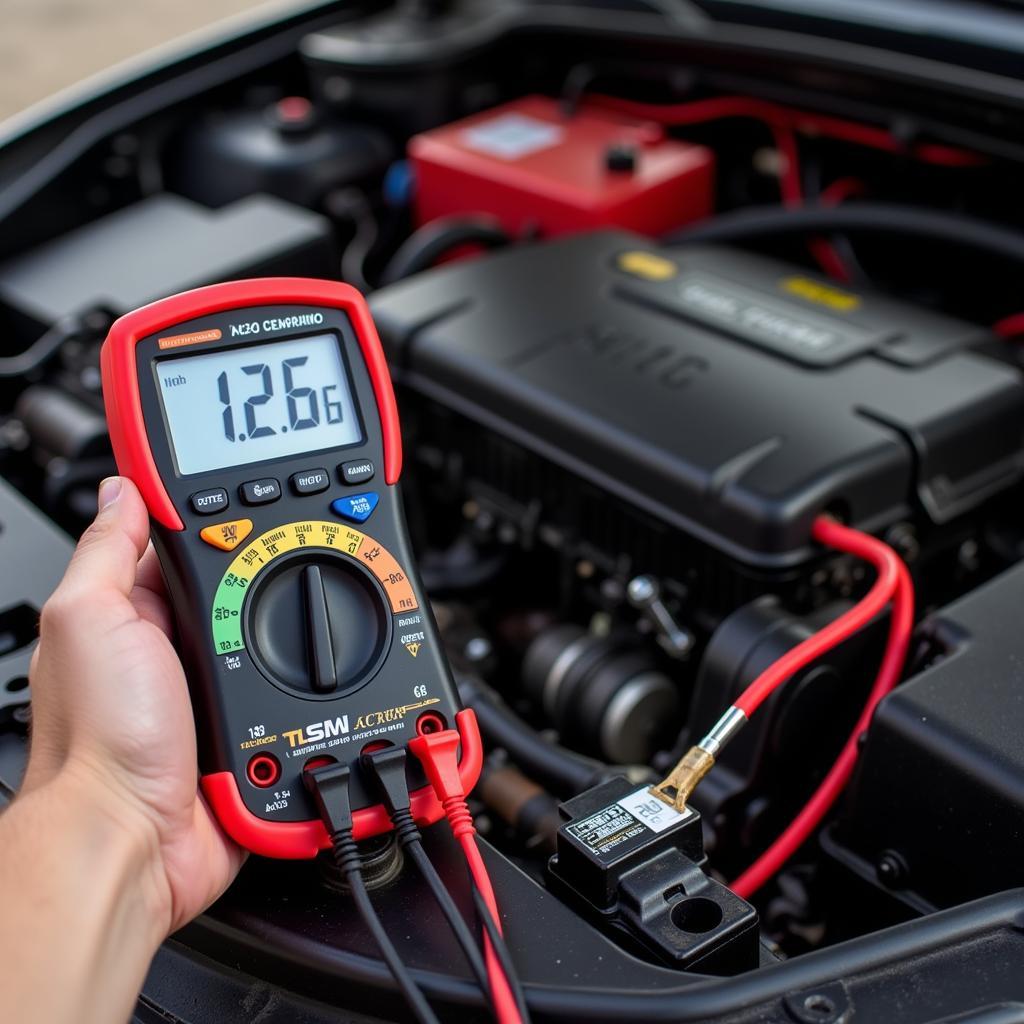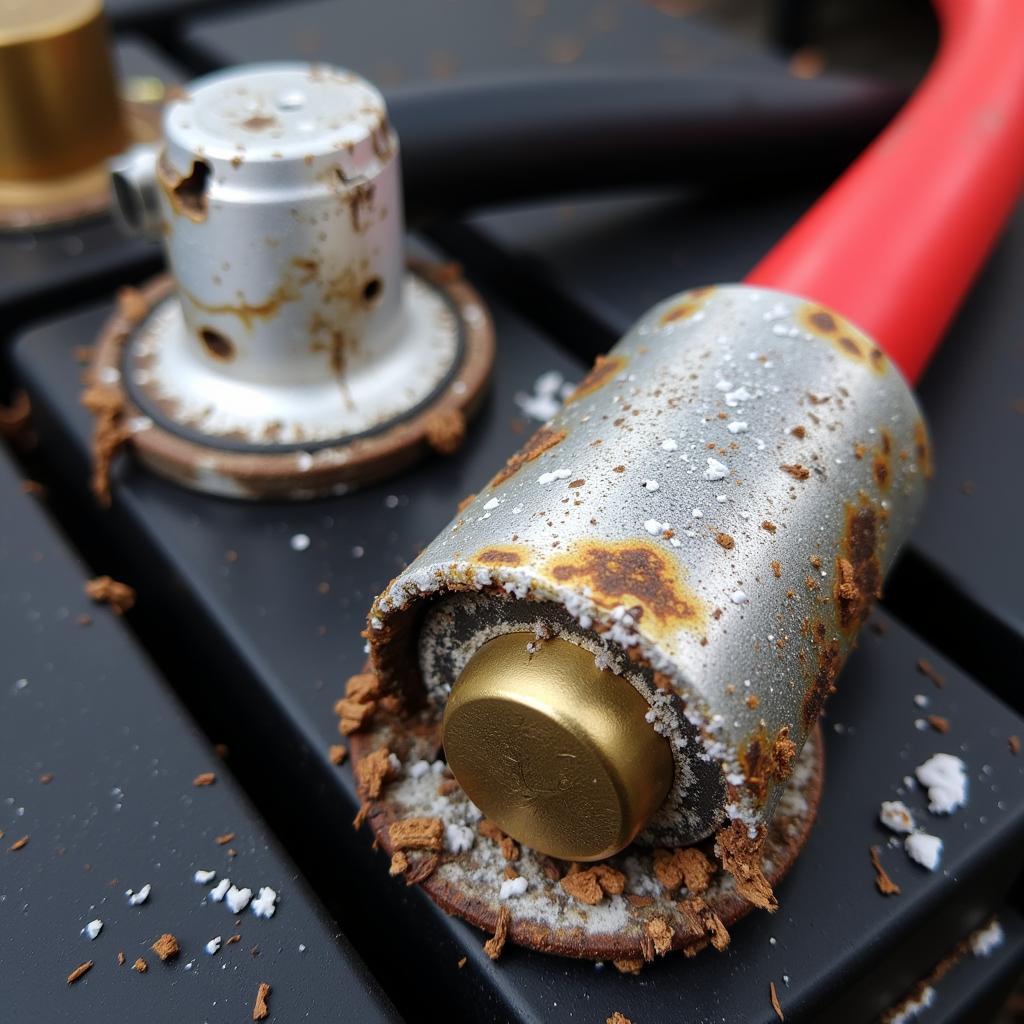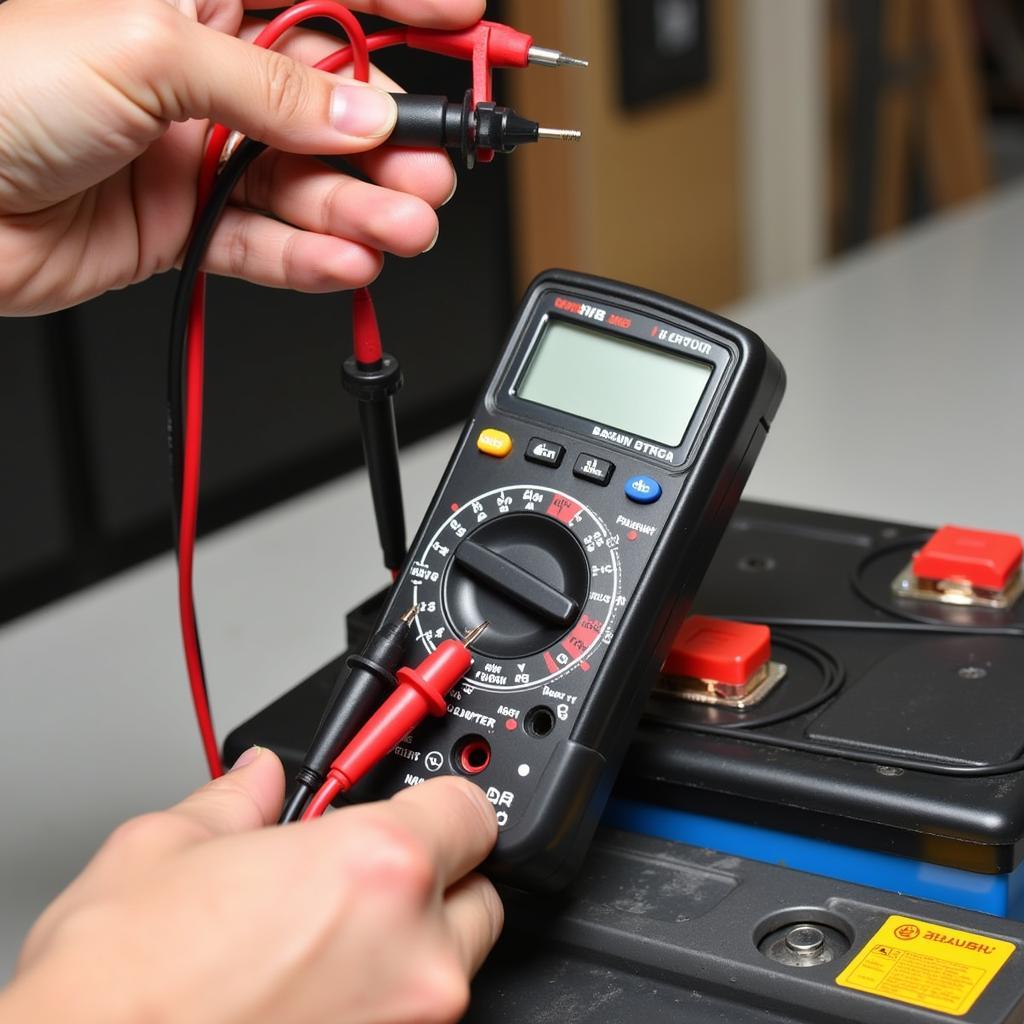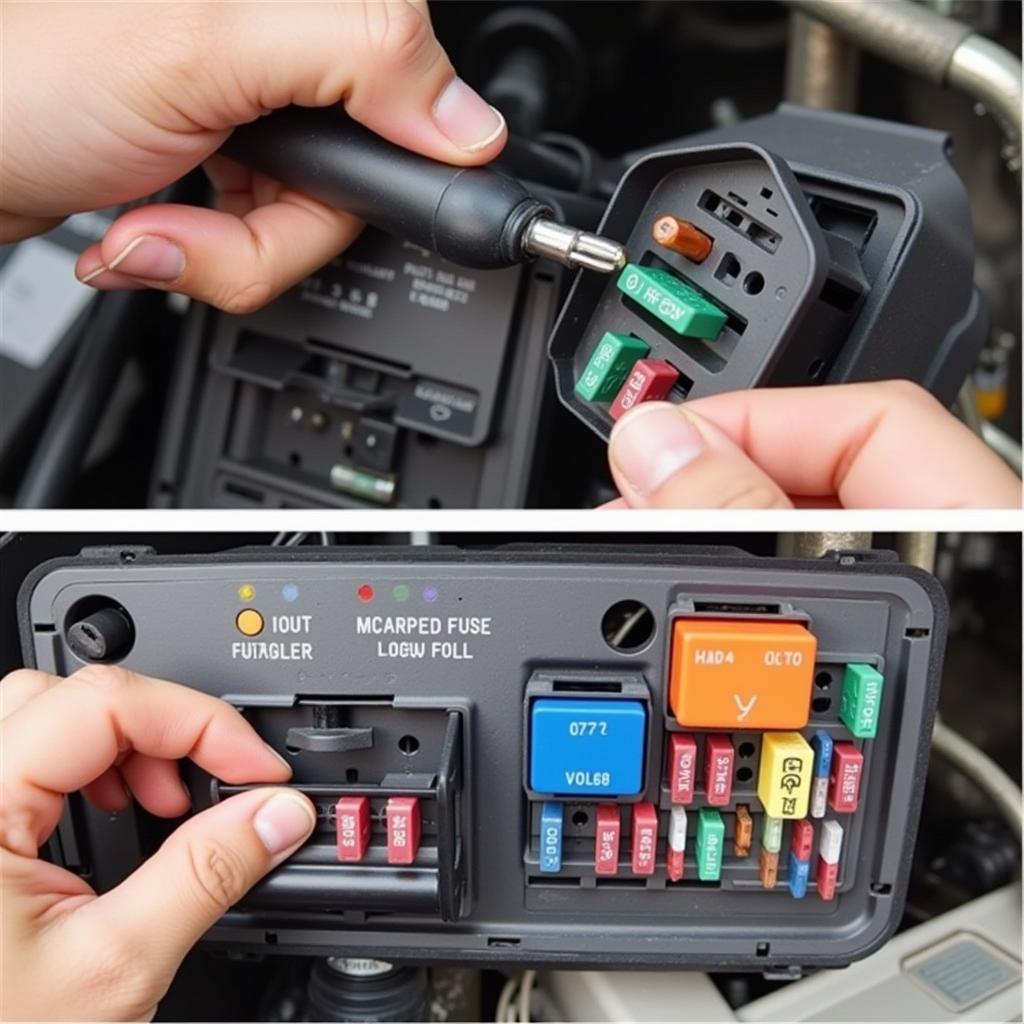A dead car battery is a frustrating experience, but understanding why your car battery keeps draining and knowing how to prevent it can save you time, money, and a lot of headaches. This comprehensive guide will explore the common causes of car battery drain and provide effective solutions to keep your car battery from draining.
Why is My Car Battery Draining?
Several factors can contribute to a draining car battery. These range from simple things like leaving lights on to more complex issues with the electrical system. Identifying the culprit is the first step towards keeping your car battery from draining.
Parasitic Draw: The Silent Battery Killer
A parasitic draw occurs when an electrical component continues to consume power even after the car is turned off. This can be a significant cause of battery drain and is often difficult to detect. Common culprits include faulty interior lights, glove box lights, door switches, and even aftermarket accessories like stereo systems.
 Example of Parasitic Draw
Example of Parasitic Draw
Old Age: The Inevitable Decline
Like all batteries, car batteries have a limited lifespan. As they age, their capacity to hold a charge diminishes, making them more susceptible to draining. Extreme temperatures, both hot and cold, can also accelerate this aging process.
Faulty Alternator: The Power Generation Problem
The alternator is responsible for recharging the battery while the engine is running. A malfunctioning alternator will fail to replenish the battery’s charge, leading to a gradual drain and eventually a dead battery.
Corroded Battery Terminals: The Connection Conundrum
Corroded battery terminals can disrupt the flow of electricity between the battery and the car’s electrical system. This can prevent the alternator from properly charging the battery and ultimately lead to a drain.
 Corroded Car Battery Terminals
Corroded Car Battery Terminals
How to Keep Your Car Battery From Draining
Here are some proactive measures and troubleshooting steps you can take to prevent your car battery from draining:
- Regularly Inspect Your Battery: Check for any signs of corrosion on the terminals. If you find any, clean them with a mixture of baking soda and water.
- Turn Off All Lights and Accessories: Double-check that all interior and exterior lights, as well as accessories like the radio and air conditioning, are turned off before exiting your vehicle.
- Limit Short Trips: Short trips don’t allow enough time for the alternator to fully recharge the battery, especially in colder weather. If possible, combine short trips or opt for longer drives.
- Unplug Unused Devices: Remove any chargers or devices plugged into the car’s power outlets when not in use. These can draw power even when the car is off.
- Test Your Battery Regularly: Have your battery tested at a local auto parts store or mechanic to assess its health and identify potential issues early on.
- Upgrade to a Battery Maintainer: A battery maintainer is a device that provides a small, constant charge to the battery, especially useful for vehicles that are stored for extended periods or driven infrequently.
Performing a Parasitic Draw Test
If you suspect a parasitic draw, a simple test can be performed using a multimeter. This involves measuring the current draw with the ignition off and all accessories turned off. A reading above a certain threshold indicates a parasitic draw, which should be investigated further.
car battery not keeping charge
 Multimeter Parasitic Draw Test
Multimeter Parasitic Draw Test
Expert Insights on Preventing Battery Drain
“One often overlooked aspect of battery maintenance is the impact of extreme temperatures,” says John Davis, a seasoned automotive electrical engineer. “Both extreme heat and cold can significantly shorten a battery’s lifespan. It’s essential to take extra precautions during these periods.”
“Regularly cleaning battery terminals is a simple yet crucial step in preventing battery drain,” adds Sarah Miller, an experienced automotive technician. “Corrosion can impede the flow of electricity, leading to a host of problems, including a dead battery.”
Conclusion
Keeping your car battery from draining involves a combination of proactive maintenance and troubleshooting. By following the tips and techniques outlined in this guide, you can significantly reduce the risk of encountering a dead battery and ensure reliable starting every time. Remember to address any potential issues promptly and maintain good battery hygiene for optimal performance.
FAQ
- How often should I clean my car battery terminals? Cleaning your battery terminals every few months is recommended, especially in harsher climates.
- Can I jump-start my car if the battery is completely drained? Yes, you can jump-start a car with a drained battery, but it’s essential to follow the correct procedure.
- How long does a car battery typically last? The average lifespan of a car battery is between three and five years, but various factors can influence this.
- What are the signs of a failing alternator? Dim headlights, flickering interior lights, and difficulty starting the car are common signs of a failing alternator.
- Is it safe to drive with a bad alternator? While you might be able to drive for a short distance, it’s not recommended to drive with a bad alternator as it can lead to a complete battery failure and leave you stranded.
- How can I test my alternator? You can have your alternator tested at most auto parts stores or by a qualified mechanic.
- What should I do if my battery keeps draining even after replacing it? If your new battery keeps draining, it’s likely a sign of a parasitic draw or another electrical issue that needs professional diagnosis.

